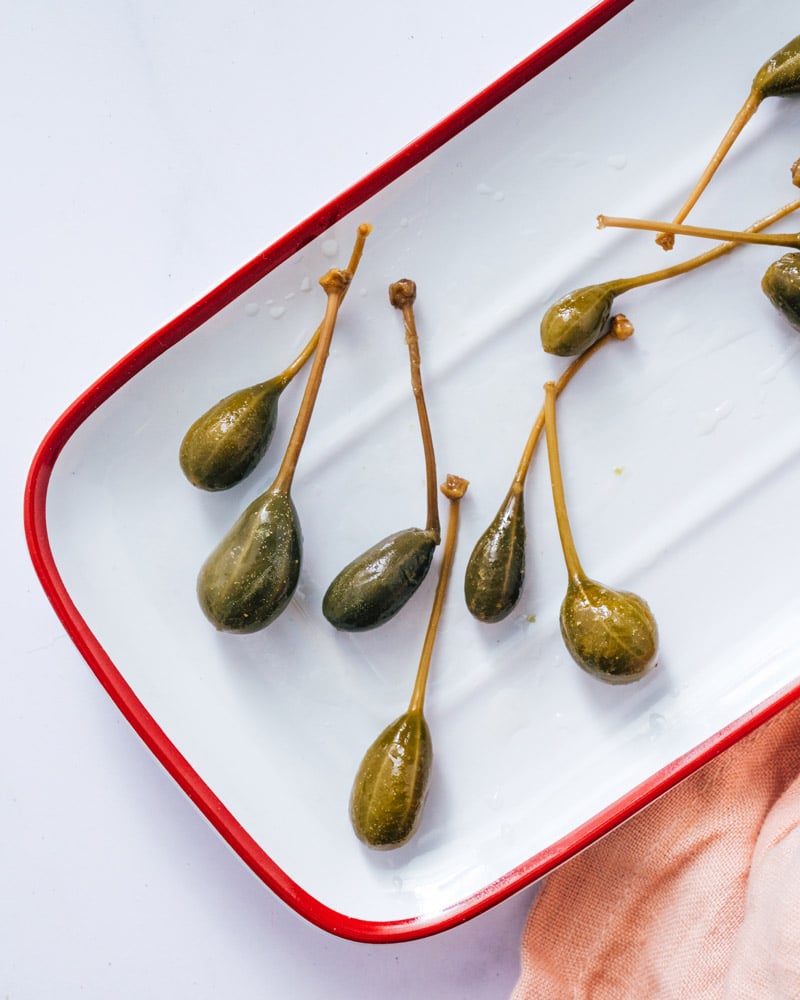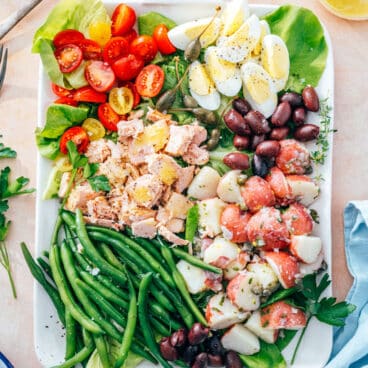You’ve heard about capers, but what are caper berries? The two may come from the same plant, but don’t go about substituting one for the other! The elegant shape of these berries make them suitable as a fancy garnish on salads or cheese boards, but they’re not for sauces and pastas like the smaller round capers. Alex is a big fan of this salty, briny ingredient: and he’s converted me, too. Here’s what to know!
What are caper berries?
Caper berries are the seed-filled fruit of the Mediterranean caper plant. They look like an olive with a long stem, oblong and green-gray in color. Caper berries are sold pickled in jars: you can find them near olives at the grocery store. They’re common in Mediterranean cuisine like Spanish, Italian and Greek foods. Don’t confuse caper berries with capers! Capers are the small round flower buds of the caper plant. They’re much smaller, completely round, and more commonly used in recipes (like in Chicken Piccata, Caper Sauce, or on a Smoked Salmon Bagels). Capers have a saltier, brinier flavor and are great for flavoring pastas and sauces. Caper berries tasty tangy and briny, like a mild version of a caper; they’re more commonly used as a garnish for salads or charcuterie boards.
Ways to use caper berries
Can you substitute caper berries for capers? No, contrary to what you might think. The berries are much larger than capers and have seeds inside, which adds a crunch to their texture. Their elegant stems make them suited to using as garnishes in salads, not as a component of sauces. Do not add caper berries to pasta like you would capers! When you serve caper berries, the eater should remove the stem before eating. It’s more like a garnish than a salad component. Here are the best ways to use caper berries:
Salad garnish, like in Nicoise SaladBowl meal garnish, like Hummus BowlsComponent for charcuterie boards, cheese boards, or antipasto plattersGarnish for drinks like a Classic Martini or Dirty Martini
More quick guides
Mystified by an ingredient, or want to learn more about flavor secrets? Here are a few more quick guides to peruse:
Understand the magic of Fire Roasted Tomatoes Learn about spicy Calabrian Chilis or Chipotle Peppers in AdoboReview your leafy greens: Watercress, Butter Lettuce, Romaine Lettuce, Watercress, Arugula, and EndiveSee why Castelvetrano Olives make an olive lover out of anyone
5 from 1 review






